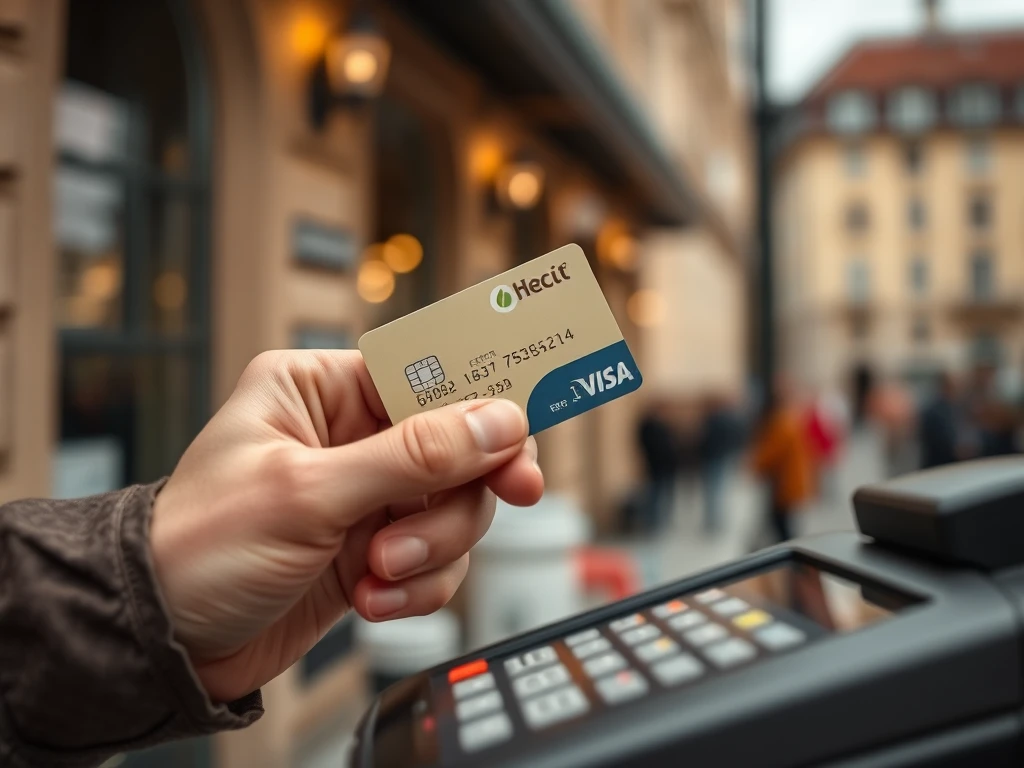Crypto Cards Surge: European Everyday Spending Challenges Traditional Banks

Crypto cards are making significant inroads into the daily lives of European consumers, particularly when it comes to small purchases. A recent report highlights that these cards are now directly competing with traditional banks in the realm of micro-spending across Europe, marking a notable shift in how people handle their everyday transactions.
Crypto Cards Challenge Traditional Banking in Europe
Data reveals that crypto cards are becoming a viable alternative to cash and traditional bank cards for small purchases in Europe. According to a report shared with Crypto News Insights, nearly half (45%) of all crypto-linked card transactions are under 10 euros ($11.7). This is a spending category where cash has historically been dominant, suggesting that crypto cards are successfully capturing a segment of the market previously less accessible to digital payments.
The report indicates that users of crypto cards are developing spending patterns that increasingly resemble those of traditional bank card users. This normalization of crypto payments for routine purchases signals a growing maturity in cryptocurrency adoption for practical use cases beyond speculation.
Unpacking European Payments Data: CEX.IO Report Insights
The report from CEX.IO provides specific data points illustrating this trend. They observed a 15% increase in newly ordered crypto cards across Europe in 2025. This rise suggests growing consumer interest and a willingness among Europeans to explore digital assets for their everyday payments needs.
Comparing average transaction values also shows interesting differences:
- Average crypto card transaction: 23.7 euros ($27.8)
- Average bank card transaction (Q1 2025 Mastercard data): 33.6 euros ($39)
The lower average transaction value for crypto cards further supports their use in smaller, more frequent purchases compared to potentially larger transactions made with bank cards.
Everyday Spending Habits Evolve with Crypto
The data clearly shows that crypto cardholders are using their cards for essential, everyday spending. Groceries account for a significant portion of purchases, making up 59% of transactions, which is close to the European Central Bank’s benchmark of 54% for traditional cards. Dining and bar expenses also feature prominently, accounting for 19% of transactions, slightly above the average for in-person food and drink spending with traditional cards.
Alexandr Kerya, vice president of Product Management at CEX.IO, commented on this trend, stating, “What we’re seeing in Europe is that crypto card users aren’t just experimenting with new tech — they’re showing us what everyday spending might look like in a truly cashless future.” He added that the average card payment volume had risen 24% in the month prior, indicating growing momentum.
Cryptocurrency Adoption Accelerates Online
Beyond micro-spending, crypto card users are also leading the way in online payments. While European Central Bank data shows that 21% of all card payments across the euro area are conducted online, CEX.IO’s figures reveal that crypto card users perform nearly double that amount, with 40% of their transactions happening on the internet.
The data also sheds light on the cryptocurrencies preferred for these payments. Stablecoins are the dominant force, powering 73% of transactions. Other major cryptocurrencies like Bitcoin (BTC), Ether (ETH), Litecoin (LTC), and Solana (SOL) are also being used for everyday purchases like groceries, dining, and transportation.
This trend isn’t limited to one provider. Reports from Oobit and Crypto.com also indicate strong spending on everyday essentials and high volumes in online shopping transactions among European users.
Navigating Challenges to Crypto Adoption: The Barclays Example
Despite the positive trends in crypto card adoption and usage for payments, challenges remain. In a contrasting move, Barclays recently announced plans to ban crypto transactions on its Barclaycard credit cards. The bank cited concerns about customers potentially accumulating unmanageable debt due to the volatile nature of the crypto market.
Barclays also highlighted the current lack of consumer protection in the sector, noting that crypto asset purchases do not offer recourse through services like the Financial Ombudsman Service or the Financial Services Compensation Scheme, leaving consumers potentially exposed if something goes wrong.
In conclusion, the data from Europe presents a compelling picture: crypto cards are no longer just a niche product for crypto enthusiasts. They are actively being used for everyday spending, including micro-payments, and are showing higher rates of online transaction adoption compared to traditional cards. While obstacles like regulatory concerns and traditional banking resistance, as seen with Barclays, still exist, the momentum in consumer usage suggests a significant shift towards wider cryptocurrency adoption for practical, daily financial activities in Europe.








